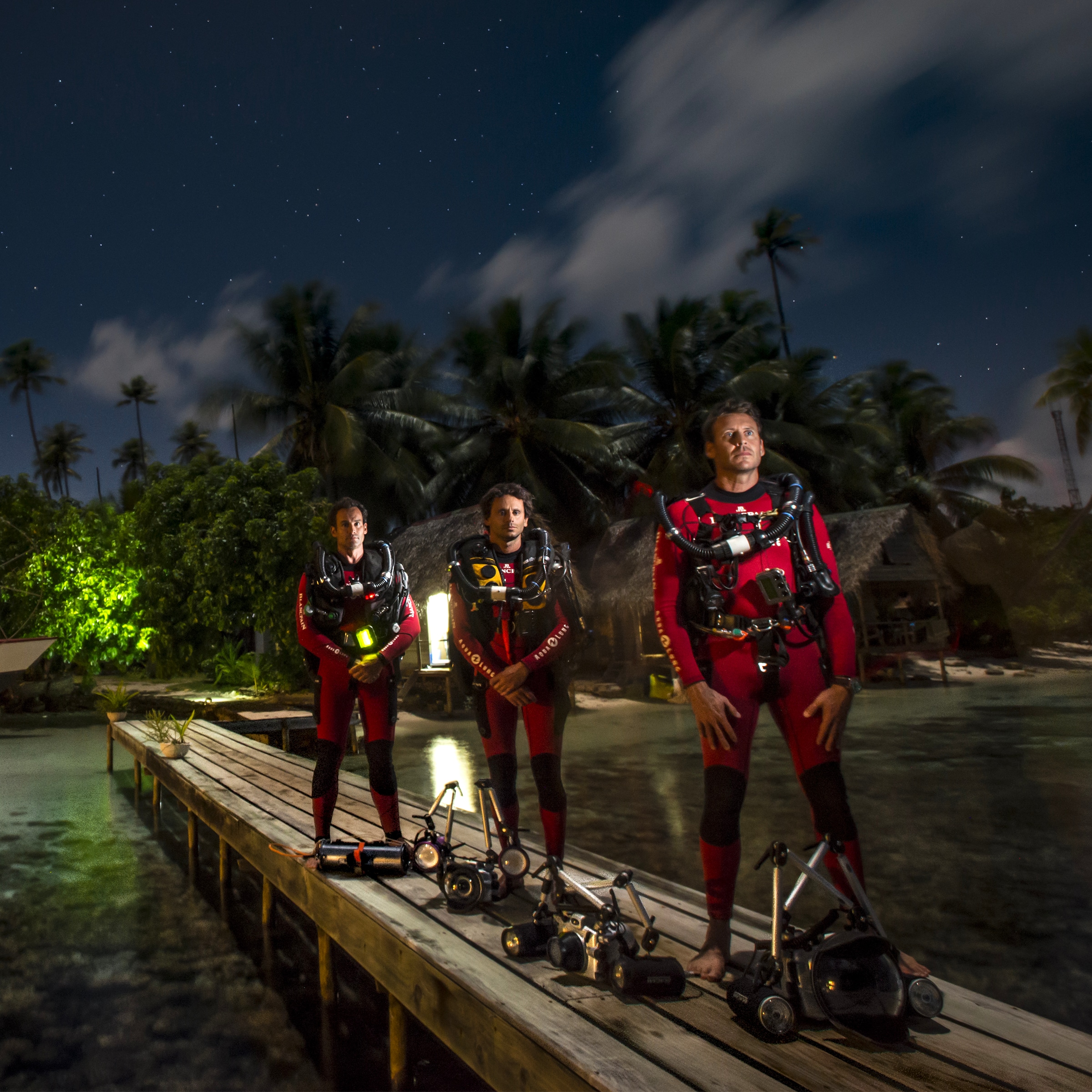Even though planet Earth only has five, Swatch is welcoming OCEAN OF STORMS into its Bioceramic Scuba Fifty Fathoms Collection that celebrates Blancpain’s iconic Fifty Fathoms, a watch that revolutionized watchmaking by becoming the first true diver’s watch more than seventy years ago. Known by the Latin name Oceanus Procellarum, this is actually a lunar mare located on the western edge of the near side of the moon. Meaning Ocean of Storms, it is the biggest mare or "sea" on the moon, spanning more than 2,500 kilometers from north to south and covering around 2 million square kilometers. The new Bioceramic Scuba Fifty Fathoms OCEAN OF STORMS, however, is nowhere near that big. In fact, it has exactly the same dimensions and features as ARCTIC OCEAN, PACIFIC OCEAN, ATLANTIC OCEAN, INDIAN OCEAN and ANTARCTIC OCEAN.
OCEAN OF STORMS has been given its own nudibranch (scientific name: Nudibranchia), Okenia Luna. It is featured in a digital print on the movement’s rotor, the part that allows the watch to recharge automatically with a simple movement of the wrist. The full moon zoomed in on the Ocean of Storms is also digitally imprinted on the oscillating weight.
"The signature poetic complication of the Manufacture du Brassus, the moon phase not only is the face of Blancpain, but it also represents the revival of traditional watchmaking following the quartz crisis." (Marc A. Hayek, President & CEO) Unlike many manufacturers who, in the 1970s, tried to reduce their production costs by removing complications to compete with quartz watches – in vain, Blancpain took the opposite approach and wanted to demonstrate that a mechanical timepiece bore witness to an extraordinary age-old know-how and that quartz could never replace a complex mechanical watchmaking creation.

To this end, in 1983 the Manufacture unveiled its first moon-phase timepiece and initiated a movement to face quartz, this complication becoming the face of the mechanical watchmaking revival. Firmly determined to make mechanical watchmaking shine, Blancpain made its moon phase the complication that paved the way for others, such as the perpetual calendar, the split-seconds chronograph, the 8-day tourbillon, the minute repeater and the extra-thin movement, thus creating the "Six Masterpieces of the Art of Watchmaking".
A true Blancpain emblem, the moon phase can be found in the Villeret, Fifty Fathoms and Ladybird collections, and on two world firsts in particular: the Villeret Equation du Temps Marchante and the Villeret Traditional Chinese Calendar. With its extensive presence in the catalogue of the Manufacture du Brassus, the moon phase makes Blancpain the brand that probably offers the widest range of watches to feature it.

Powerful at Blancpain, moon phases also exert their power over the aquatic world. The tides have a major influence on ocean life, but the moon's impact does not stop there. The phases of the moon and the intensity of its light have unsuspected and fascinating effects on the behaviour of marine animals and ecosystems. Reproduction, egg-laying, predation, communication and feeding habits are just some of the phenomena linked to and impacted by the phases of the moon. In fact, many marine species have biological 'moon clocks' that enable them to adapt to events in their environment, such as the phases of the moon and therefore the moonlight present on a given night.

Founder and leader of the Gombessa Expeditions, which he founded with the help of Blancpain as part of the Blancpain Ocean Commitment to preserve the oceans, Laurent Ballesta explains that "we know the influence of the moon on tides. We are less familiar with its influence on ocean wildlife. And yet lunar cycles set the rules and dictate the fundamental behaviour of most living creatures.
In the tropics, coral fish larvae wait for the new moon to colonise the lagoons, taking advantage of the darkest nights to escape predators. In contrast, groupers meet once a year to reproduce, all together, on the full moon of the winter solstice in the southern hemisphere. Surgeon-bagnard are more fish of habit and reproduce with the utmost precision at each full moon, and at each new moon throughout the year. Horseshoe crabs, unchanged for 100 million years, make the same pilgrimage each spring: these strange crabs, true living fossils, also wait for the full moon to emerge from the water, invade the beaches and lay their million eggs. And what about the great hammerhead shark, which prefers the full moon to come marauding through the passes of the Polynesian lagoons to devour the leopard rays? What can we say other than that life cycles and lunar cycles are forever linked? In other words, we all have an appointment with the moon".
